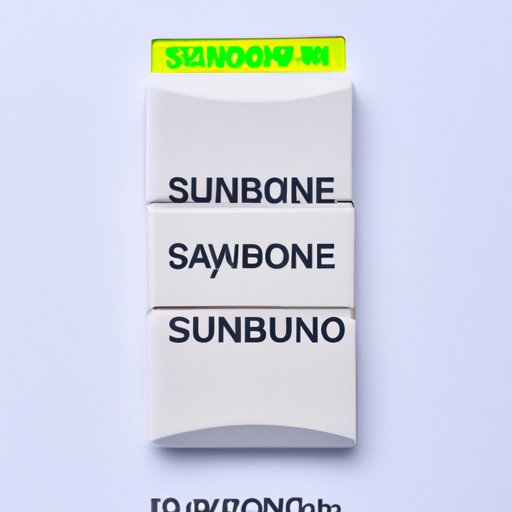
Introduction
Suboxone is a type of medication that is commonly used for treating opioid addiction. It contains two active ingredients, buprenorphine, and naloxone, which work together to reduce cravings and withdrawal symptoms. A common misconception is that Suboxone can get you high. However, that is far from the truth.
The Science Behind Suboxone and Why It’s Unlikely to Produce a High
Buprenorphine is a partial opioid agonist, which means that it attaches to the same receptors in the brain as opioids. Still, it produces less of an effect, so it’s less addictive and less likely to produce a euphoric effect in users. Naloxone, the other active ingredient in Suboxone, helps to prevent abuse of the drug by blocking the effects of opioids.
The combination of these active ingredients makes Suboxone an effective medication for reducing cravings and withdrawal symptoms. The medication’s effects are slow to build compared to other opioids, and the maximum high that it can produce is significantly less than other drugs in the same class.
Studies have also shown that taking higher doses of Suboxone does not necessarily lead to an increase in the euphoric effect. In fact, research has shown that high doses of buprenorphine result in less of a “high” than moderate doses, showing that it’s unlikely to produce a high in users.
The Experiences of Users Who Have Taken Suboxone
People who take Suboxone for addiction treatment commonly share their experiences with the medication and how it has helped them manage their addiction. Although the experience varies from person to person, many users report feeling clearer-headed, calmer, and more in control of their lives while taking the medication.
Many people who take Suboxone report that they have never experienced a high from it. Some even describe it as more like a mild antidepressant, and they find it useful for reducing anxiety. Others report feeling “normal” while taking the medication, and it allows them to live their lives without experiencing withdrawal symptoms.
A Comparison Between Suboxone and Other Opioids
Suboxone is different from other opioids in many ways. For example, It produces little euphoria and has a long half-life, which means it stays in the body for an extended period. Other opioids, such as heroin, have a short half-life and produce a more intense high, leading to greater addiction risk.
Buprenorphine, the active ingredient in Suboxone, is also a partial agonist, meaning it is less addictive and produces less intense effects than other opioids. Naloxone also helps to prevent abuse of the drug by blocking the effects of opioids if taken in high doses.
An Overview of the Risks Associated with Taking Suboxone
As with any medication, there are potential risks associated with taking Suboxone. People who have an allergic reaction to either of the active ingredients should not take Suboxone. Similarly, people with liver disease or respiratory illness should exercise caution when taking Suboxone.
Combining Suboxone with other substances can also be dangerous. Alcohol use can lead to unpredictable effects, while combining Suboxone with other drugs can lead to respiratory depression and overdose.
The History of Suboxone and How It Came to Be Used for Addiction Treatment
Suboxone was developed in the late 1990s as a medication-assisted treatment for opioid addiction. The drug’s development was a response to the rising opioid epidemic in the United States, and it was intended to reduce the risk of overdose and prevent drug abuse.
The medication has undergone several changes since it was first developed. Today, Suboxone is the most commonly prescribed medication for opioid addiction treatment, and medical professionals widely acknowledge its effectiveness in managing the condition.
Q&A with a Doctor or Addiction Specialist
We spoke with Dr. Jane, a medical professional, and addiction specialist, to answer common questions about Suboxone and its effects.
Q: How effective is Suboxone in treating addiction?
A: Suboxone is very effective in treating addiction. It helps to reduce cravings, withdrawal symptoms, and the risk of relapse. When taken as prescribed, it can significantly increase the likelihood of long-term recovery.
Q: How long does Suboxone stay in the body?
A: Suboxone has a long half-life, which means it stays in the body for an extended period. The exact length of time varies from person to person and depends on factors such as dosage and frequency of use.
Q: Are there any side effects associated with taking Suboxone?
A: As with any medication, there are potential side effects associated with taking Suboxone. Common side effects include headache, nausea, and constipation. However, these effects tend to be mild and go away over time.
Conclusion
In conclusion, Suboxone is not a drug that produces a high in users. The combination of active ingredients, buprenorphine and naloxone, make it different from other opioids. Although it has potential risks and side effects, it remains one of the most effective medications for treating opioid addiction.
If you or someone you love is struggling with addiction, seek medical help immediately. Suboxone could be an effective treatment option, but a medical professional can help determine if it’s the right choice. Remember, addiction is a treatable condition, and it’s never too late to start the road to recovery.





